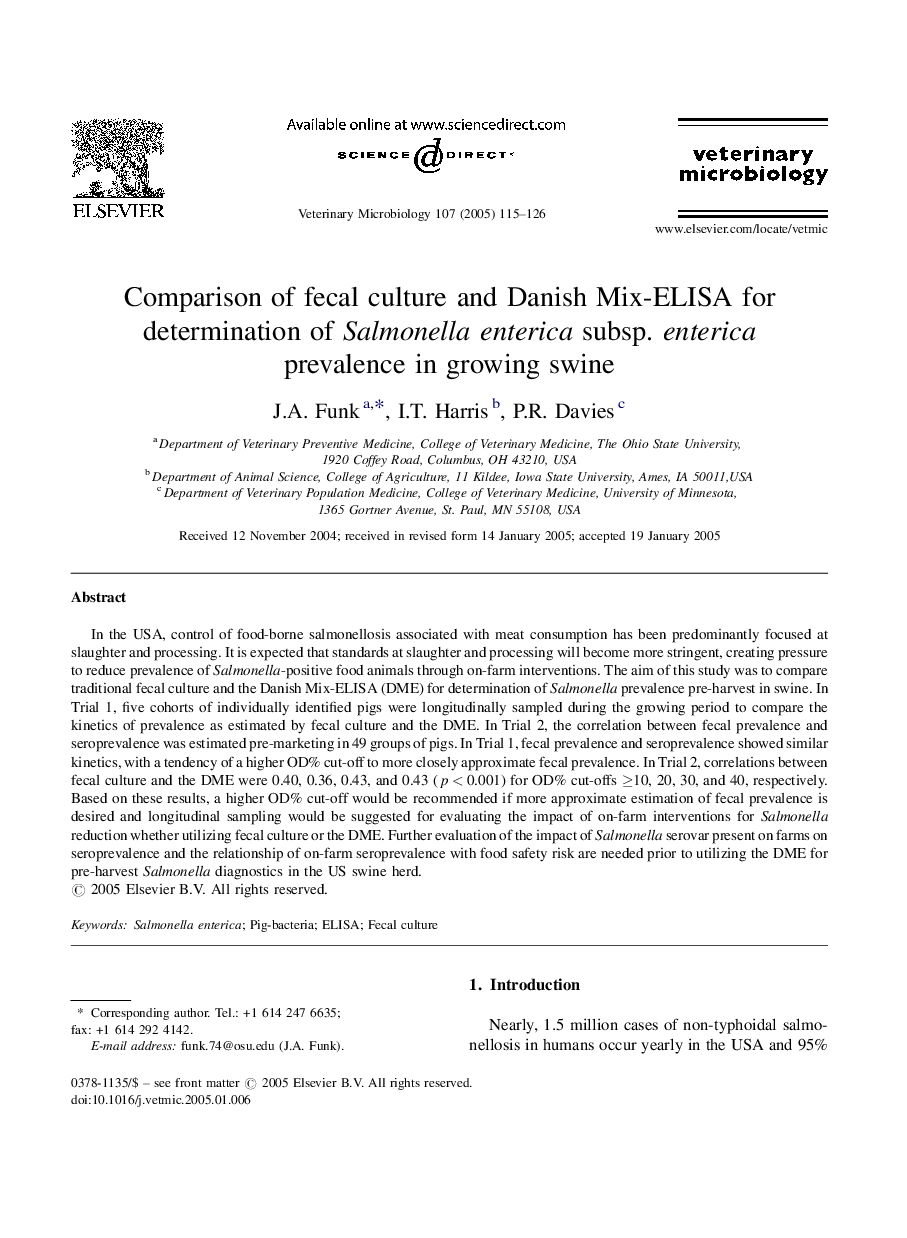| Article ID | Journal | Published Year | Pages | File Type |
|---|---|---|---|---|
| 8989500 | Veterinary Microbiology | 2005 | 12 Pages |
Abstract
In the USA, control of food-borne salmonellosis associated with meat consumption has been predominantly focused at slaughter and processing. It is expected that standards at slaughter and processing will become more stringent, creating pressure to reduce prevalence of Salmonella-positive food animals through on-farm interventions. The aim of this study was to compare traditional fecal culture and the Danish Mix-ELISA (DME) for determination of Salmonella prevalence pre-harvest in swine. In Trial 1, five cohorts of individually identified pigs were longitudinally sampled during the growing period to compare the kinetics of prevalence as estimated by fecal culture and the DME. In Trial 2, the correlation between fecal prevalence and seroprevalence was estimated pre-marketing in 49 groups of pigs. In Trial 1, fecal prevalence and seroprevalence showed similar kinetics, with a tendency of a higher OD% cut-off to more closely approximate fecal prevalence. In Trial 2, correlations between fecal culture and the DME were 0.40, 0.36, 0.43, and 0.43 (p < 0.001) for OD% cut-offs â¥10, 20, 30, and 40, respectively. Based on these results, a higher OD% cut-off would be recommended if more approximate estimation of fecal prevalence is desired and longitudinal sampling would be suggested for evaluating the impact of on-farm interventions for Salmonella reduction whether utilizing fecal culture or the DME. Further evaluation of the impact of Salmonella serovar present on farms on seroprevalence and the relationship of on-farm seroprevalence with food safety risk are needed prior to utilizing the DME for pre-harvest Salmonella diagnostics in the US swine herd.
Related Topics
Life Sciences
Agricultural and Biological Sciences
Animal Science and Zoology
Authors
J.A. Funk, I.T. Harris, P.R. Davies,
